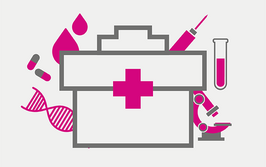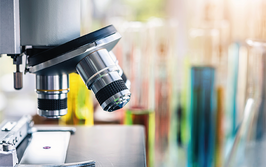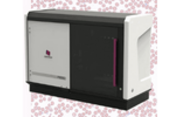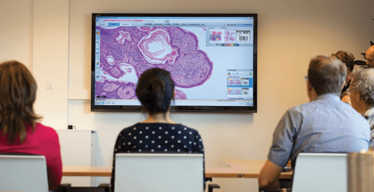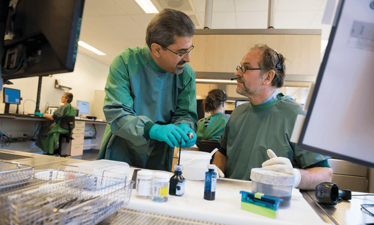Making the Move to 100 Percent Digital
LabPON is the first laboratory in the world to fully digitize its histopathology services – but how did they approach it? And has it paid off?

At a Glance
- LabPON was prompted to move away from manual histopathology after participating in a digital network project in 2009
- Digital pathology has four key benefits: efficient workflows, connected teams, increased safety and new insights from analyzing large datasets
- The move required a lot of planning, considering everything from adjustment periods to ergonomics, but the results have paid off
- The lab hopes to set an example of improved networking and patient care with its new processes, and assist others in making the same move
Digital pathology has been grabbing headlines lately as more and more labs explore its possibilities. It’s shown its merits for long-distance work, teaching and training, and expanding the capacity of overworked labs in need of time-saving techniques. But how far does the digital revolution go? At the Laboratory for Pathology East Netherlands (LabPON), we have taken a bold step into a computer-driven future – transitioning all of our manual diagnoses to digital.
As the largest pathology laboratory in our country, LabPON consults on more than 55,000 histological cases each year – over 300,000 slides of human tissue. We currently employ 17 pathologists and a total of 115 staff, but even that isn’t enough. There’s likely to be a steep increase in future demand for our services, driven by the aging population and new screening programs, so we concluded that we needed a further increase in efficiency that still allowed us to maintain quality. It was our laboratory’s participation in a digital network project in 2009 that yielded the answer – after trialing it, we decided to transition all of our manual diagnoses to digital. We are now the first laboratory in the world to completely digitize its histopathology diagnostic processes.
Taking the first step
Our initial vision was that digitization would improve the logistics of remote consultations and case revisions, but we began to realize even more benefits the more we used it. The impetus to move away from manual was strong for us; traditional pathology workflows have innate delays built into their processes. For example, transferring glass slides runs the risk of loss, and when collaborating with others – whether with specialists for second opinions, or with other sites – takes time, which delays how quickly a diagnosis can be made and a patient’s treatment can begin. Digitizing images that are normally viewed through a microscope can minimize these delays and improve the operational efficiency of a lab. Pathologists can then directly access image files and view the same case at the same time irrespective of whether it is an internal and external consult – making diagnosis simpler, safer and more efficient.
In my opinion, digital pathology has some key benefits:
- Digitized workflows increase organization, streamline processes and reduce turnaround time;
- Connected teams enable remote communication and collaboration across sites and specialties;
- Increased safety results from a reduction in diagnostic errors caused by mistakes in material handling; and
- New insights come from analyzing large sets of clinical data.
It’s clear that digital analysis can improve a lab’s performance – but how does a major transition like that begin? Before our team at LabPON began the process of implementing digital technology solutions, we first had to formulate a business vision. We needed to establish a long-term strategy, create a staged timeline that would allow measurable results and validation of the transition, and justify such a significant investment. Most of all, we had to consider just how different our new way of working would be. We weren’t just replacing our existing equipment to make the shift – we had to adopt a completely new workflow throughout the lab, which meant that we had to make sure every member of our team was on board.
The journey to 100 percent
Approaching the transition in phases allowed us to make adjustments to workflows and processes “on the fly.” For example, in 2012, we gave our pathologists the option of working digitally as well as with their microscopes. Knowing that we would eventually be fully digitized, this let each person incorporate it into their daily routines at their own pace. At LabPON, adoption generally took between three and eight months. For our pathologists, the most difficult part of the transition was learning to trust the digital image. Once they realized that the image on the screen was still just as valuable – if not more so – than what they could see through the microscope, acceptance was quick.
Of course, they also took some time to adapt their logistics and work processes. Each pathologist has a different organizational and workplace style, and some were easier to adapt than others. For other labs seeking to follow in our footsteps, it’s important to understand that – although there was some delay in performing diagnoses during the transition – once our pathologists got used to the new system, throughput time of diagnosis actually accelerated. There are always a few bumps in the road to any new way of working, but the benefits of digitization have far outweighed those hiccups.
Speeding up services
Before we implemented digital pathology throughout our laboratory, we had to study its impact on workflow and turnaround time. It’s not always obvious, and microscopy is a good example of this. Although an experienced pathologist was able to establish a diagnosis just as quickly using either manual or digital methods, digital diagnostics are faster overall when the entire logistical process is taken into consideration. The instant accessibility of previous cases, the ability to view slides side-by-side with different stains, measurements, counting, annotations and the simplification of internal and external consults all contribute to increased speed and quality. And that’s only the beginning; we expect that introduction of image analysis software in the future could help our pathologists work even more quickly.
Our laboratory also uses multidisciplinary discussions – where members from diverse teams discuss difficult cases – to improve diagnosis. Our study of digital pathology showed that, at these discussions, switching to digital saved 28 hours of administrative work for the support staff, a financial gain of nearly three-quarters of a full-time administrator’s salary. These initial gains have been promising, and we’re currently setting up a new flow analysis so that workflow optimization is more readily transparent. Overall, our experiences so far indicate that using digital diagnostics has significantly improved internal logistics, consultations, efficiency and accuracy at LabPON – that ultimately will lead to savings in cost and time.
An education in ergonomics
One factor you might not immediately think about when considering a digital move is the ergonomics of the increased computer usage for pathologists. We found that using keyboard shortcuts and touchpads reduced the risks of repetitive strain injuries from frequent mouse usage. Monitors are another concern – and I would advise that anyone transitioning to a computer-based lab consider a few things:
- Using at least two monitors of the same size prevents eye strain arising from variation in the size of images, letters, and other visuals.
- In terms of settings (color, brightness and resolution), the monitors should be equivalent and of good quality. This prevents discrepancies in color, contrast and other details that can’t be corrected through calibration.
- The necessary monitor size depends on its quality and the viewing distance of the pathologist. Regardless, though, I recommend keeping the monitor size under 24–30 inches, as larger screens can cause excessive neck strain.
Our pathologists were much happier to transition – and benefited much sooner – when they knew that we were careful to ensure their health and wellbeing.
Goal-setting, goal-getting
As our goal was always to go 100 percent digital in terms of histopathology diagnoses, it was important to focus strategically on our expected outcomes. So that everything ran smoothly, we established a clear list of what we’d like to see:
- Full digitization of the work process: we clearly established the areas of transition so that we could step smoothly from analog to digital, rather than being caught in years of combined service – letting us see results sooner.
- All-digital images: the full digitization of our images allowed us to realize the benefits of speedier retrieval, case comparison, specialist consultation and second-opinion acquisition.
- The integration of diagnostics into the oncological treatment chain: this reinforces the position of the pathologist in multidisciplinary discussions and allows pathologist participation in other clinical discussions.
- Image recognition systems: full digitization in pathology creates the possibility of linking data in the future by means of image recognition, resulting in better diagnostics. Combining this information intelligently with pathology data from past treatments could potentially create better care.
These were only our biggest goals. We also had a list of smaller ones – increased access (even allowing pathologists to work remotely), specialization (allowing cases to be assigned by workload and specialty), improved frozen section services (no longer requiring a pathologist and technician to travel to a particular site or wait during surgery), the potential for regional networks and external services, and the birth of the Pathology Image Exchange (PIE) project. The last item is a collaboration between The Netherlands Society for Pathology, the PALGA Foundation, the national database where all pathological results are stored and the network for data exchange with all pathological anatomical laboratories in the Netherlands. Their goal is to set up a working group to develop a national platform for image sharing, and we hope to be a significant part of that.
Admittedly, transitioning an entire workflow to a digital process is a complex endeavor. At LabPON, we had no roadmap for an ideal implementation of digital pathology, and there’s been a lot of learning and development. As we overcame teething problems and discovered new challenges, it sometimes felt like we were taking two steps forward and one back. But in the end, making digital pathology a reality at LabPON was inspired by vision, rather than short-term ROI factors – so we kept going, and ultimately, we made it. Our digital laboratory is a source of great pride to us, because it strengthens our commitment to ensuring that our patients and clinical colleagues receive the fastest, most effective and best-informed
diagnoses possible.
A pathologist and project director of the digital pathology team at LabPON, The Netherlands.




